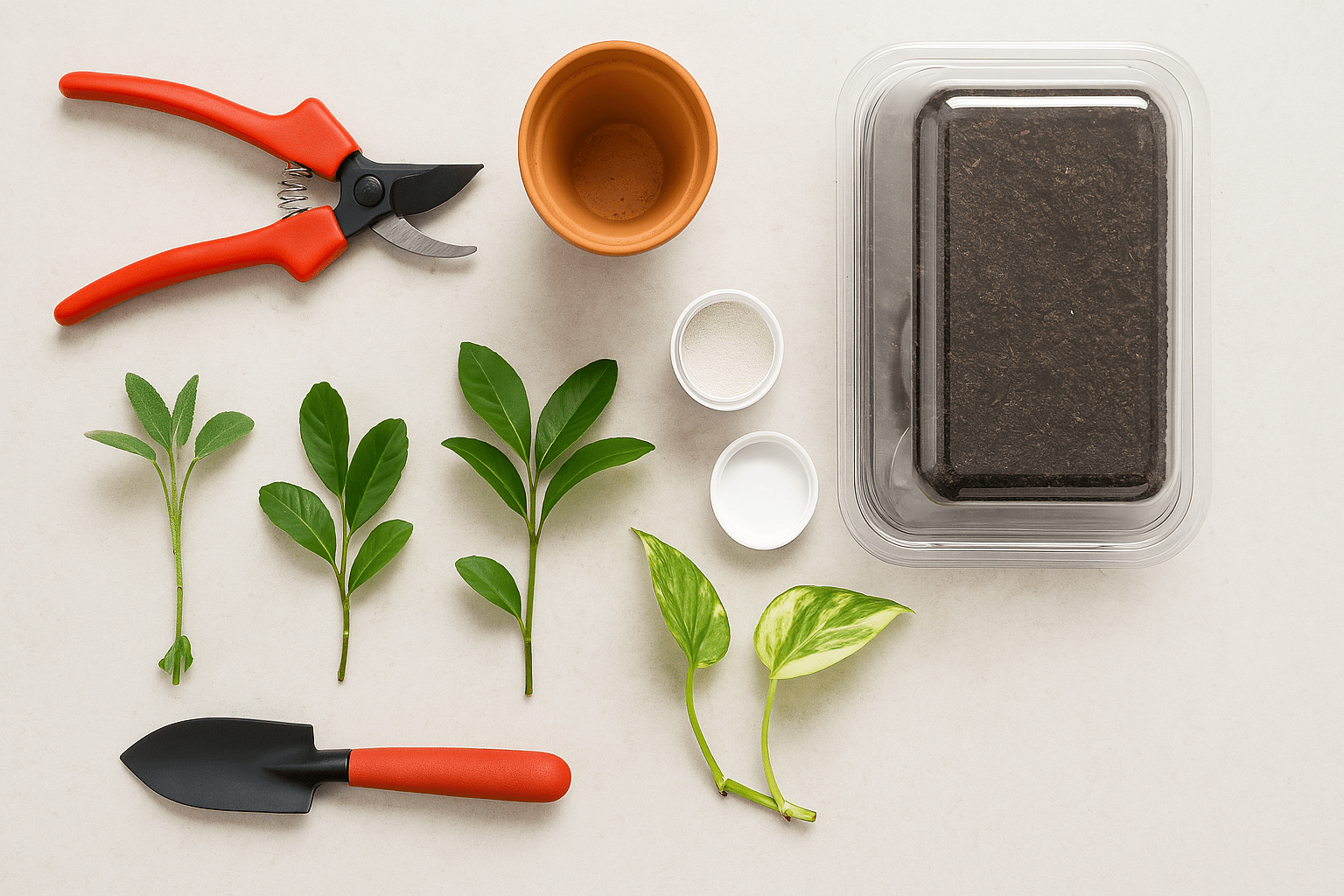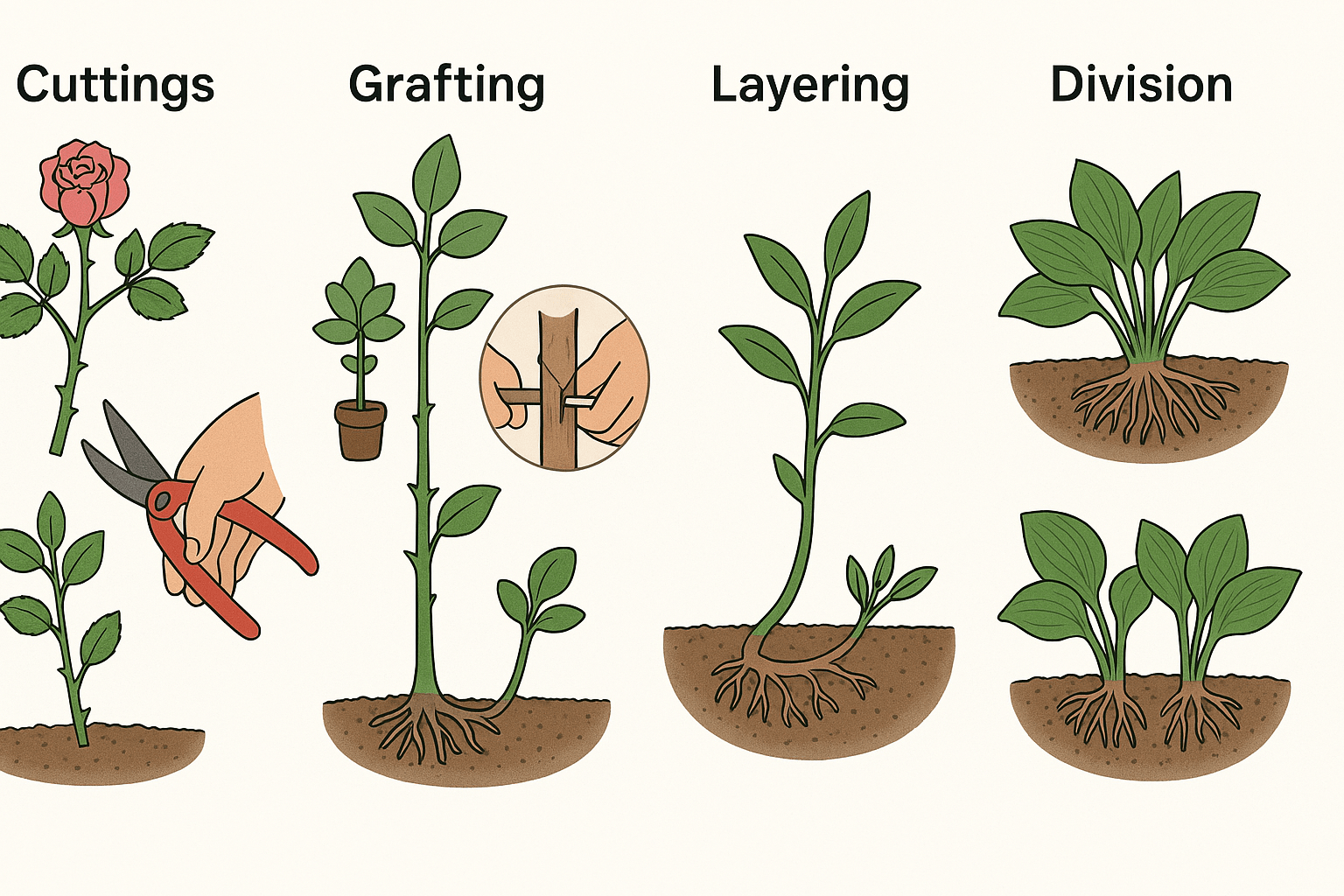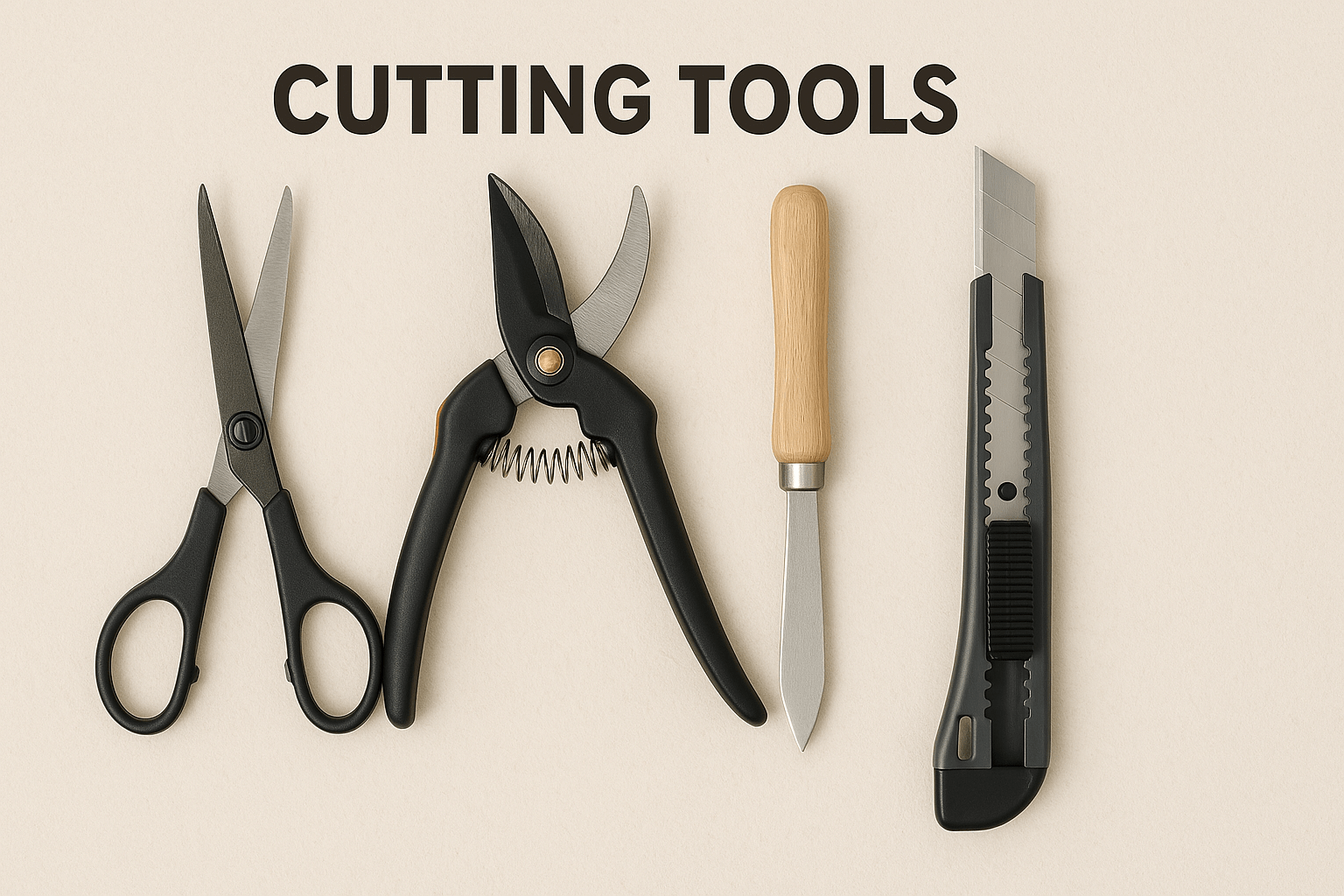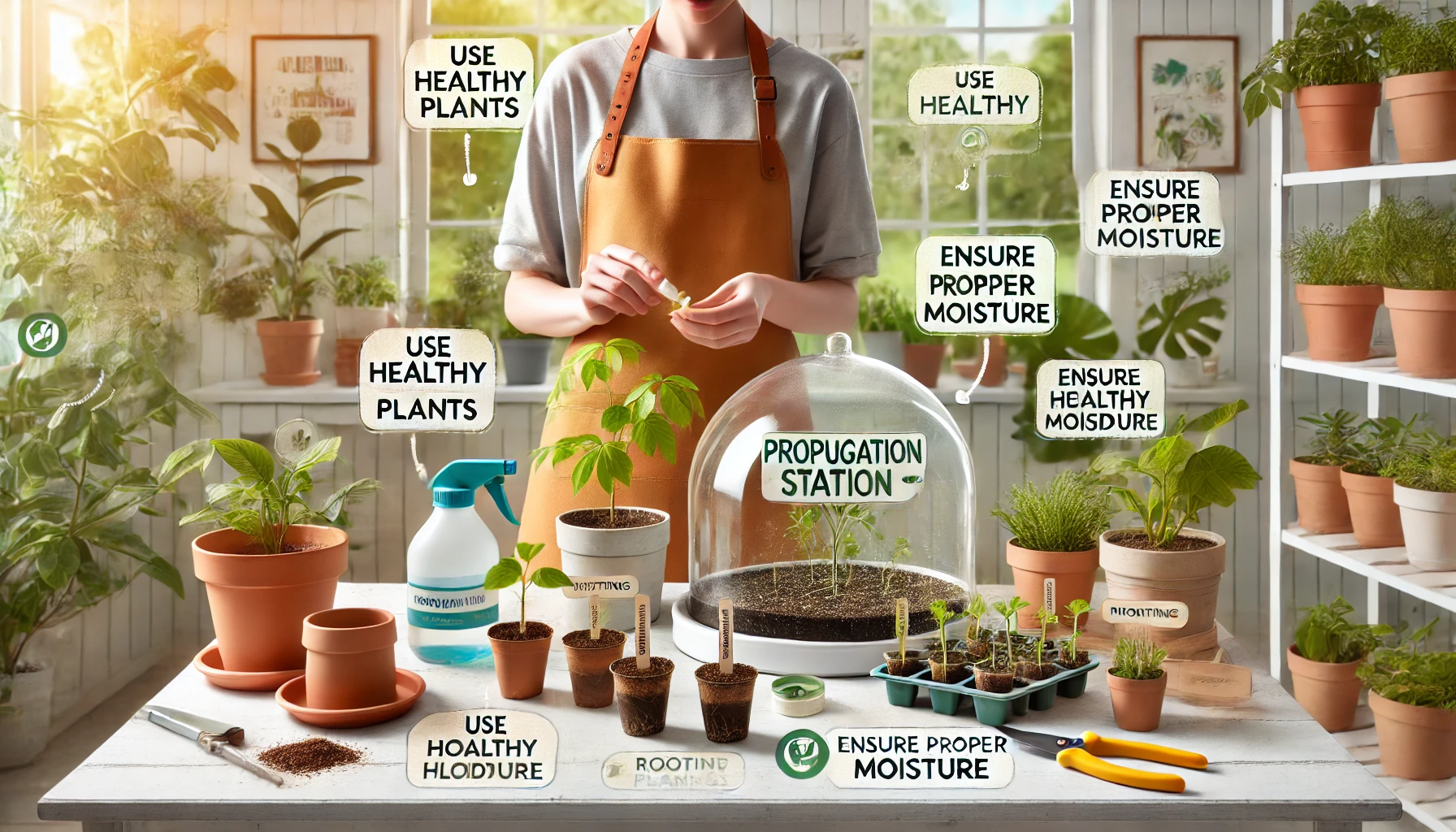
Basic Plant Propagation Methods: Easy Techniques for Beginners
Have you ever wanted to grow new plants from the ones you already have? Whether you’re a gardening enthusiast or a beginner, learning basic plant propagation methods can help you expand your garden without spending extra money. Propagation is the process of creating new plants from seeds, cuttings, or other plant parts, and it’s an essential skill for any gardener. By understanding the right techniques, you can successfully multiply your favorite plants and enjoy a thriving, lush garden. In this guide, we’ll explore the easiest and most effective ways to propagate plants, making the process simple and enjoyable for beginners.
Table of Contents
ToggleWhat Is Plant Propagation?
Plant propagation is the process of creating new plants from existing ones. It is a fundamental gardening technique used by home gardeners and professionals to expand plant collections, preserve rare species, and enhance plant health.

There are two main types of propagation:
- Sexual Propagation – This involves growing plants from seeds. It promotes genetic diversity, which can lead to stronger, more resilient plants. However, seed-grown plants may not always be identical to the parent.
- Asexual Propagation – Also called vegetative propagation, this method creates new plants from stems, leaves, roots, or cuttings. It produces clones of the parent plant, ensuring the same characteristics, such as color, shape, and growth habits.
Common asexual propagation techniques include:
- Cuttings – Taking a piece of a plant (stem, leaf, or root) and encouraging it to grow new roots.
- Layering – Bending a stem to the soil while still attached to the parent plant, allowing it to root before separating.
- Division – Splitting an existing plant into smaller sections, each with its roots, to create multiple plants.
Benefits of Plant Propagation
Plant propagation is a fundamental gardening technique that allows you to grow new plants from existing ones. Whether you’re a home gardener or a commercial grower, understanding the benefits of plant propagation can help you achieve healthier plants, reduce costs, and expand your garden efficiently.

Cost-Effective Gardening
Instead of buying new plants, propagation enables you to multiply your favorite varieties at no extra cost. This is particularly beneficial for expensive or rare plant species.
Preserves Desired Plant Traits
Through methods like cuttings or grafting, you can replicate plants with specific characteristics, such as disease resistance, faster growth, or superior fruit production. This ensures consistency in your garden.
Faster Growth and Maturity
Certain propagation methods, such as cuttings, allow plants to grow and mature faster than starting from seeds. This means quicker blooms, earlier fruit production, and a more vibrant garden in less time.
Increases Plant Resilience
By selecting strong, healthy parent plants, you can propagate offspring that inherit their resilience to pests, diseases, and harsh weather conditions, leading to a more robust garden.
ustainable and Eco-Friendly
Propagation reduces the need for large-scale plant production, minimizing environmental impact. It also helps preserve endangered plant species by increasing their numbers without harming natural populations.
Enhances Garden Diversity
With propagation, you can experiment with different plant varieties, creating a more diverse and visually appealing landscape. It’s an excellent way to introduce new flowers, fruits, or shrubs to your garden without significant investment.
By incorporating plant propagation into your gardening routine, you can enjoy healthier plants, save money, and contribute to a more sustainable environment.
Types of Plant Propagation Methods
Plant propagation is the process of growing new plants from existing ones. There are two primary methods: sexual propagation and asexual propagation. Each has unique advantages and is suitable for different types of plants.
Sexual Propagation (Seed Propagation)
Sexual propagation involves growing plants from seeds. This method is common for flowers, vegetables, and many trees.
 Advantages:
Advantages:
- Produces genetically diverse plants
- Suitable for large-scale planting
- Some plants are easier to grow from seeds
 Challenges:
Challenges:
- Seeds may take longer to germinate
- Some plants require specific conditions to sprout

Asexual Propagation (Vegetative Propagation)
Asexual propagation involves reproducing plants without seeds, ensuring the new plants are identical to the parent.

A. Cuttings
Taking a stem, leaf, or root cutting and planting it in soil or water until it develops roots.



B. Grafting
Joining two plant parts—usually a rootstock and a scion—to create a new plant.



C. Layering
Encouraging a branch to grow roots while still attached to the parent plant before cutting it off.



D. Division
Splitting a mature plant into smaller sections, each with roots, to create new plants.



Choosing the Right Propagation Method
The best propagation method depends on the plant type, growth conditions, and your gardening goals. Seed propagation is great for variety, while vegetative methods ensure consistency and faster growth. Experimenting with different techniques can help you find the best approach for your plants!
Essential Tools and Materials for Propagation
Successful plant propagation requires the right tools and materials. Using high-quality equipment ensures healthy root development and increases the chances of success. Below are the must-have items for efficient propagation.
Cutting Tools
- Sharp Pruners or Scissors – A clean, precise cut promotes faster healing and root growth. Always sterilize before use.
- Grafting Knife – Ideal for delicate cuts in grafting and layering techniques.

Rooting Mediums
- Potting Mix – A well-draining, lightweight soil mix helps root formation. Choose a mix with peat moss, perlite, or coconut coir.
- Water – Some plants, like pothos or philodendrons, root well in water before transplanting into the soil.
Rooting Aids
- Rooting Hormone (Powder or Gel) – Speeds up root development, especially for woody cuttings.
- Honey or Cinnamon – Natural alternatives with antibacterial properties to protect cuttings.
Containers and Trays
- Seedling Trays – Provide a controlled environment for young plants.
- Small Pots or Jars – Useful for growing cuttings before transplanting them outdoors.
- Humidity Domes or Plastic Bags – Help retain moisture and create a greenhouse effect.
Moisture and Temperature Control
- Spray Bottle – Keeps cuttings hydrated without overwatering.
- Heat Mat – Speeds up germination and root development in colder conditions.
- Hygrometer – Measures humidity levels to ensure an optimal growing environment.
Labels and Markers
- Plant Tags – Prevent confusion by labeling different cuttings.
- Permanent Markers – Ensure labels stay readable over time.
Using these essential tools and materials will make propagation easier, improving success rates and plant health. With proper care, your cuttings will grow into thriving plants, ready to be transplanted into their permanent spots.
Common Challenges and How to Overcome Them
Even with proper care, tomatillo plants can face several challenges. Here’s how to handle them effectively.

Lack of Fruit Production
Issue: Your tomatillo plant is flowering, but no fruits are forming.
Solution: Tomatillos require at least two plants for cross-pollination. Ensure you plant multiple tomatillo plants together and encourage pollinators by growing flowers nearby.
Yellowing Leaves
Issue: Leaves turning yellow can indicate overwatering, nutrient deficiency, or pests.
Solution: Check the soil moisture—tomatillos prefer well-draining soil. Use balanced fertilizer and inspect leaves for aphids or spider mites.
Pest Infestation
Issue: Common pests like aphids, whiteflies, and hornworms can damage leaves and fruit.
Solution: Spray plants with neem oil or insecticidal soap. Introduce natural predators like ladybugs to control pests organically.
Fungal Diseases
Issue: Powdery mildew and blight can affect tomatillo plants, causing leaf discoloration and stunted growth.
Solution: Ensure proper air circulation by spacing plants apart. Avoid overhead watering and use a copper-based fungicide if needed.
Weak or Leggy Growth
Issue: Plants growing too tall and weak may indicate insufficient sunlight.
Solution: Tomatillos need full sun for at least 6–8 hours daily. If plants appear weak, move them to a sunnier spot or provide additional support with stakes.
By addressing these common challenges early, you can ensure a healthy tomatillo harvest with vibrant plants and abundant fruit.
Tips for Successful Plant Propagation
Propagating plants successfully requires the right techniques, timing, and care. Follow these expert tips to improve your success rate:
Choose the Right Method
Different plants thrive with different propagation methods. Select the best approach:
- Cuttings (e.g., succulents, herbs) – Use healthy stems or leaves.
- Division (e.g., hostas, ferns) – Separate root clumps carefully.
- Seeds (e.g., vegetables, flowers) – Use fresh, viable seeds.
- Layering (e.g., strawberries, ivy) – Encourage roots while attached to the parent plant.

Use Healthy Parent Plants
Always take cuttings or seeds from disease-free, vigorous plants. Weak or unhealthy plants produce lower success rates.
Optimize Timing
Propagation works best when plants are in their active growing season:
- Spring & Summer – Best for most cuttings and layering.
- Fall & Winter – Suitable for hardwood cuttings and some seed sowing.
Prepare the Right Growing Medium
Use a well-draining mix tailored to your plant type:
- Soilless mix – Ideal for cuttings to prevent rot.
- Moist compost – Best for seed propagation.
- Sandy soil – Helps root development in division methods.
Maintain Proper Moisture & Humidity
- Keep cuttings and seedlings consistently moist but not soggy.
- Use a humidity dome or plastic cover for cuttings to retain moisture.
- Mist delicate plants regularly to prevent drying out.
Provide Optimal Light & Temperature
- Bright, indirect light promotes root growth. Avoid direct sunlight.
- Maintain temperatures between 65-75°F (18-24°C) for best results.
Use Rooting Hormones for Faster Growth
For difficult-to-root cuttings, apply a rooting hormone powder or gel before planting to stimulate root formation.
Be Patient & Monitor Growth
Propagation takes time! Check for root development by gently tugging on cuttings after a few weeks. Transplant only when roots are strong.
Mastering basic plant propagation methods is a rewarding skill that allows you to expand your garden, preserve your favorite plants, and share them with others. Whether you’re growing from seeds, cuttings, or division, each method offers a simple and cost-effective way to create new plants. With the right tools, patience, and care, you can successfully propagate a wide variety of plants and enjoy a thriving, lush garden.
Now that you understand these easy techniques, why not start experimenting? Choose a propagation method that suits your favorite plants and watch them grow! Happy gardening!
Frequently Asked Questions(FAQ)
What are the basic plant propagation methods?
The basic plant propagation methods include seed propagation (growing from seeds), asexual propagation (cuttings, division, layering, grafting), and methods like offsets, runners, and suckers. Each technique allows gardeners to grow new plants from existing ones, expanding their garden without purchasing new plants.
Can all plants be propagated using these methods?
Not all plants can be propagated through the same methods. Some plants are best propagated from seeds, while others respond better to asexual methods like cuttings or division. For example, succulents and herbs are commonly propagated from cuttings, while perennials often thrive when divided. It’s important to research which method works best for each plant species.
How long does it take for plants to root during propagation?
The time it takes for plants to root during propagation depends on the method used and the type of plant. For example, stem cuttings might take anywhere from a few weeks to a couple of months to root, while seeds can take several weeks to germinate. Environmental conditions, like humidity and temperature, also play a significant role in the success and speed of propagation.
Do I need special equipment to propagate plants?
While you don’t need anything too specialized, having a few basic tools will make propagation easier. These include pruning shears for taking cuttings, a rooting hormone to help encourage root growth, and a propagation tray or container for holding the cuttings or seeds. Good-quality soil, humidity domes, or plastic bags can also help maintain the right conditions for successful rooting.
What’s the best time of year for plant propagation?
The best time for propagation typically depends on the method and plant type. For most plants, spring and early summer are ideal times for propagation, as plants are actively growing and more likely to root successfully. However, some plants may do better in the fall or winter, especially when propagated from cuttings or by layering.
How can I prevent my propagated plants from rotting?
Rot is a common issue in propagation, especially with cuttings. To prevent this, make sure to use clean tools when taking cuttings, allow cuttings to callous over before planting them in soil, and ensure the soil or growing medium is well-draining. Additionally, avoid overwatering and provide adequate airflow to reduce the risk of fungal infections.
Can I propagate plants indoors?
Yes, many plants can be propagated indoors, especially if you can provide the right conditions such as consistent temperature, humidity, and light. Propagation trays, clear plastic covers, or even a simple plastic bag can help maintain moisture levels and create a mini greenhouse effect. This is particularly useful during the colder months when outdoor propagation isn’t possible.
How do I know when my propagated plant is ready to be transplanted?
Once your propagated plant has developed a healthy root system (usually visible by gently pulling the plant out of its container or propagation medium), it’s time to transplant it into a larger pot or directly into the garden. Typically, plants should have several strong roots and be growing new leaves or shoots before transplanting. Always handle young plants gently to avoid damaging the new roots.

